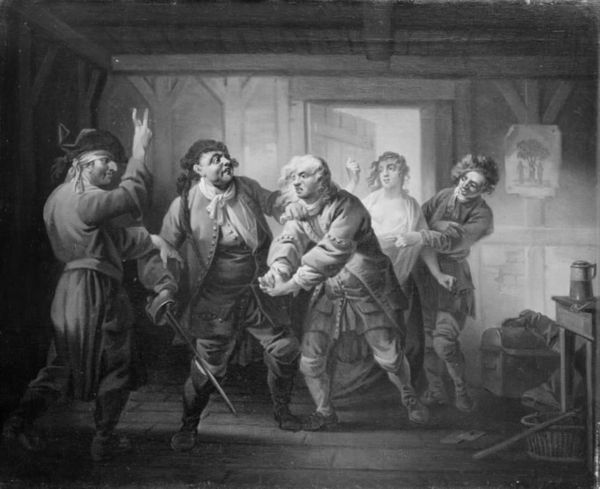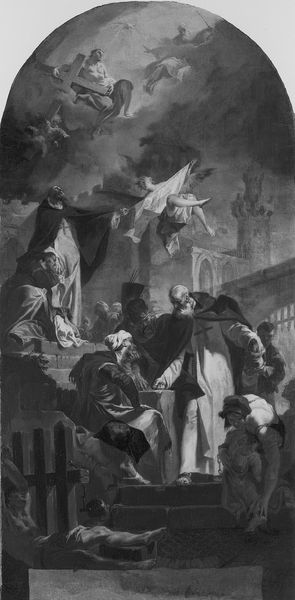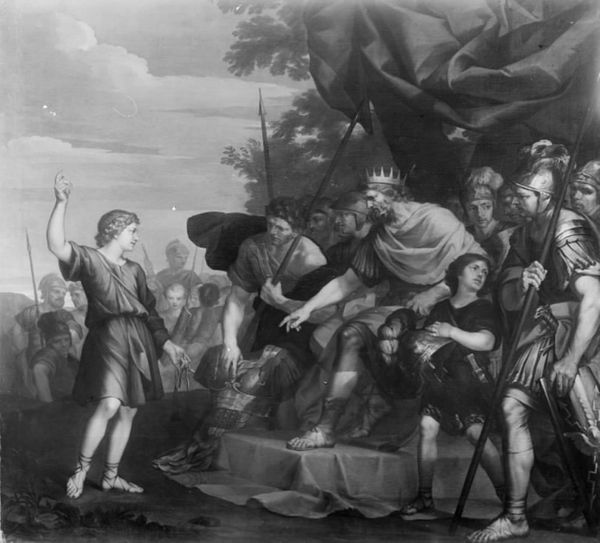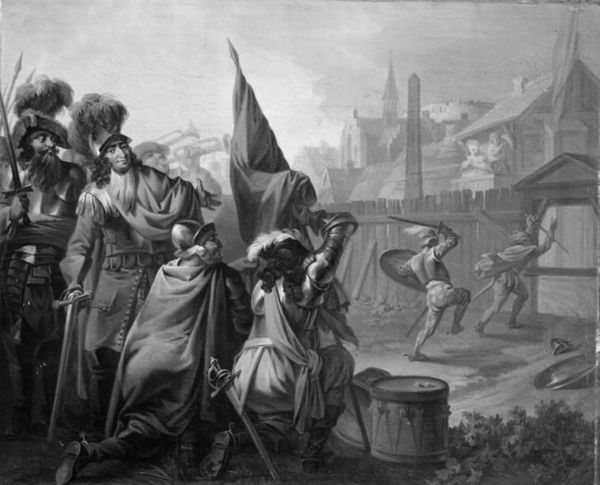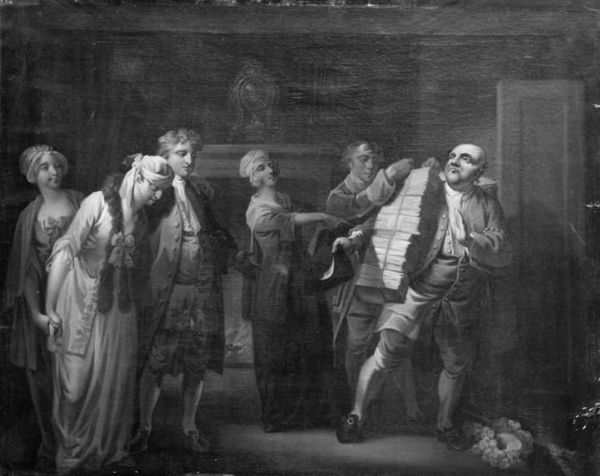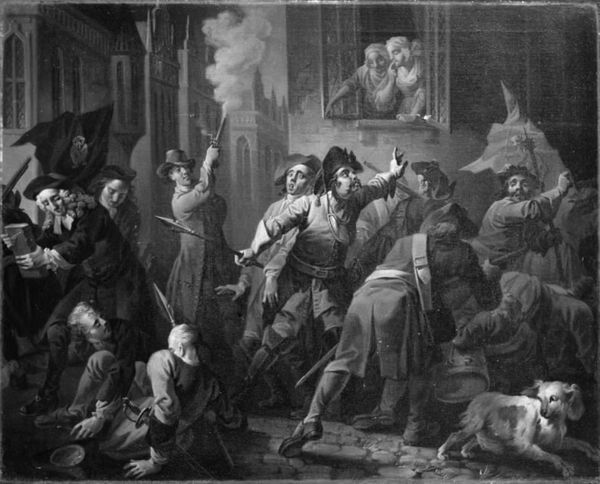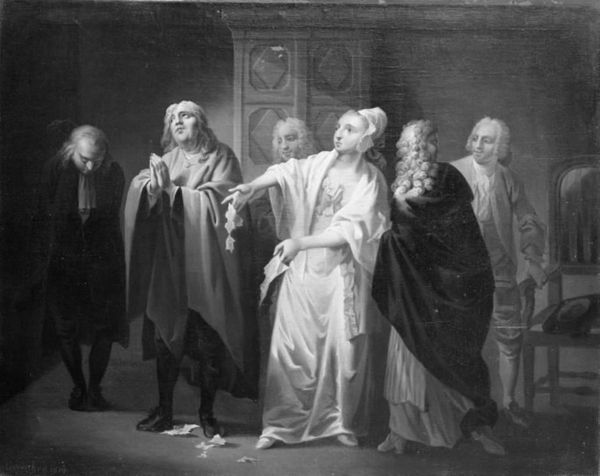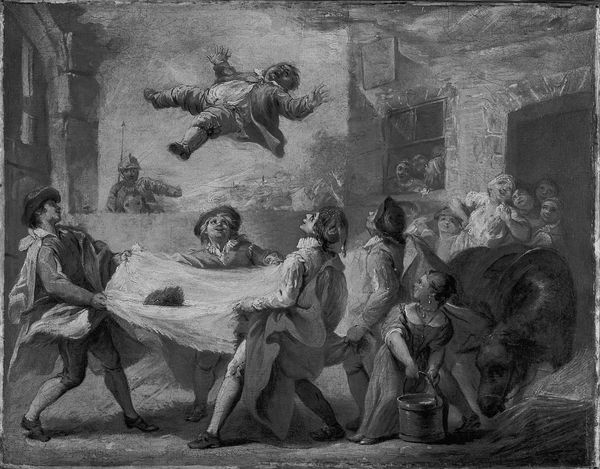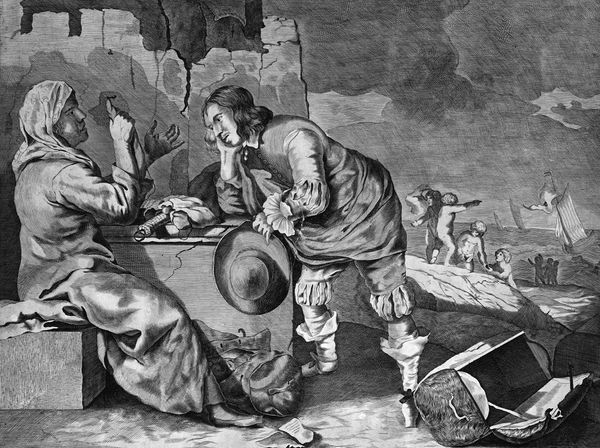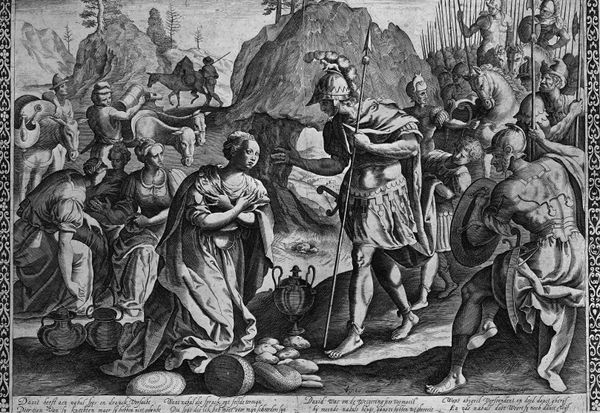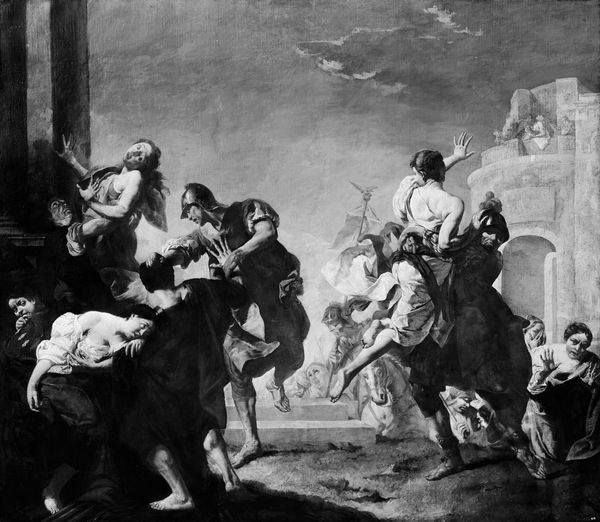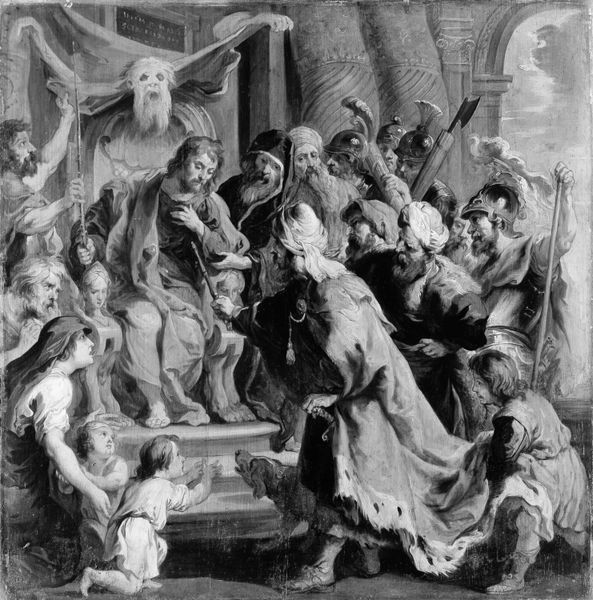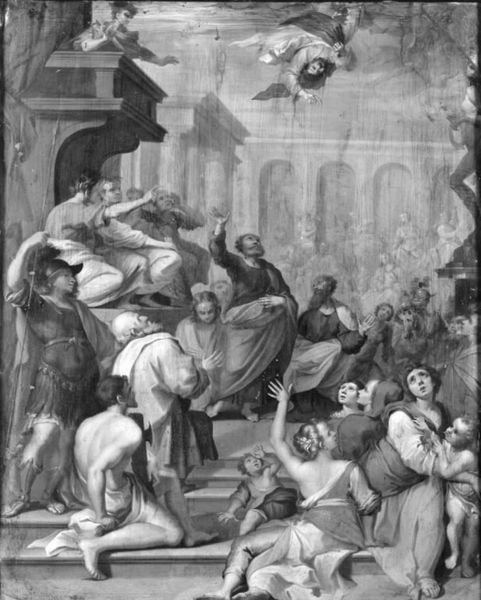
painting, canvas
#
narrative-art
#
painting
#
canvas
#
romanticism
#
black and white
#
history-painting
#
monochrome
#
monochrome
Dimensions: 59.5 cm (height) x 74 cm (width) (Netto)
Curator: This piece before us is C.A. Lorentzen's "Didrik Menschen-Skræk, 20. scene," created in 1814. The monochromatic painting, rendered in oil on canvas, resides here at the SMK, the National Gallery of Denmark. Editor: Woah. Stark, isn't it? All that grayscale drama, feels almost like a play frozen mid-performance. The guy in the wig is particularly expressive – pure comic terror. Curator: Exactly! It's brimming with performative emotion, typical of Romanticism's emphasis on heightened feeling and narrative. We should consider the historical context—the post-Napoleonic era—a time of significant social and political upheaval that fostered intense expressions of individual emotion and historical reflection. Editor: It does make you wonder, what’s the story? The title suggests it's a specific scene... Like a snapshot of someone's anxiety dream. What is "Menschen-Skræk" all about? Curator: "Menschen-Skræk" translates to "Fear of People" or "Misanthropy," and Didrik is the name of a character, likely from a play, who embodies that condition. The scene probably depicts a climactic moment of social confrontation and individual distress. Editor: So, is he freaking out because he is allergic to society, or is society allergic to him? Either way, the staging feels a bit... well, theatrical! All eyes are on him and the soon to be disclosed... Curator: The visual elements contribute to this. The setting seems grand, yet the figures' emotions suggest vulnerability and unease, mirroring Romanticism's focus on both sublime beauty and profound existential anxieties. This resonates across different intersectional narratives of alienation. Editor: Looking closer, there is something truly odd in how the main subject and bride are displayed, almost mirroring each other. The woman to the right looks concerned though. Do you reckon this could play a more nuanced view, with different reactions or social anxieties to the protagonist in particular? Curator: Exactly. This is where we might look at how gender, power dynamics, and social expectations all come into play within the artwork, and how we should read these scenes in relation to the social discourse of the early 19th century. Editor: See, now I'm thinking, who *aren't* they afraid of? The longer I look, the more characters unveil complex relations. All in all, fascinating, it just gives us the start of something to think and work upon. Curator: Absolutely. Lorentzen's piece offers an interesting intersection between historical events, artistic expression, and the continuing discourse on social alienation.
Comments
No comments
Be the first to comment and join the conversation on the ultimate creative platform.
